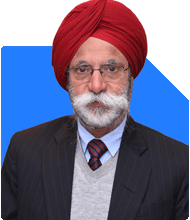Vivek Lala |323 Answers |Ask -Follow
Tax, MF Expert - Answered on Jul 22, 2023
Lala cleared his chartered accountancy exam in 2018 and completed his articleship with Chaturvedi and Shah. ... more

Hi, Vivek good morning, my dad is 84 years and he has a pension of 19 plus lakhs, to save he puts in PPF only and is their any other options to save his tax.
Its better to invest in ELSS rather than PPF because of many reasons like returns, liquidity, ease of access, etc.
Also from FY 23-24, I assume the new regime will be a better option for him so no need to park his money in PPF, rather he can do an sip in Mutual funds for his investments
Please note that these suggestions are based on your stated goals and the information you provided. It is always a good idea to consult with a financial advisor in person to better understand your risk tolerance, time horizon, and specific financial goals.
You may like to see similar questions and answers below
Mihir Tanna |1090 Answers |Ask -Follow
Tax Expert - Answered on Feb 17, 2024
T S Khurana |536 Answers |Ask -Follow
Tax Expert - Answered on Nov 22, 2024
Milind Vadjikar | Answer |Ask -Follow
Insurance, Stocks, MF, PF Expert - Answered on Oct 30, 2024
T S Khurana |536 Answers |Ask -Follow
Tax Expert - Answered on Jun 24, 2025
Nitin Narkhede |113 Answers |Ask -Follow
MF, PF Expert - Answered on Dec 15, 2025
Nitin Narkhede |113 Answers |Ask -Follow
MF, PF Expert - Answered on Dec 15, 2025
Ramalingam Kalirajan |10893 Answers |Ask -Follow
Mutual Funds, Financial Planning Expert - Answered on Dec 15, 2025
Ramalingam Kalirajan |10893 Answers |Ask -Follow
Mutual Funds, Financial Planning Expert - Answered on Dec 15, 2025
Radheshyam Zanwar |6746 Answers |Ask -Follow
MHT-CET, IIT-JEE, NEET-UG Expert - Answered on Dec 15, 2025
Ramalingam Kalirajan |10893 Answers |Ask -Follow
Mutual Funds, Financial Planning Expert - Answered on Dec 15, 2025
Ramalingam Kalirajan |10893 Answers |Ask -Follow
Mutual Funds, Financial Planning Expert - Answered on Dec 15, 2025
Ramalingam Kalirajan |10893 Answers |Ask -Follow
Mutual Funds, Financial Planning Expert - Answered on Dec 15, 2025
Samraat Jadhav |2508 Answers |Ask -Follow
Stock Market Expert - Answered on Dec 15, 2025
Ramalingam Kalirajan |10893 Answers |Ask -Follow
Mutual Funds, Financial Planning Expert - Answered on Dec 15, 2025



























